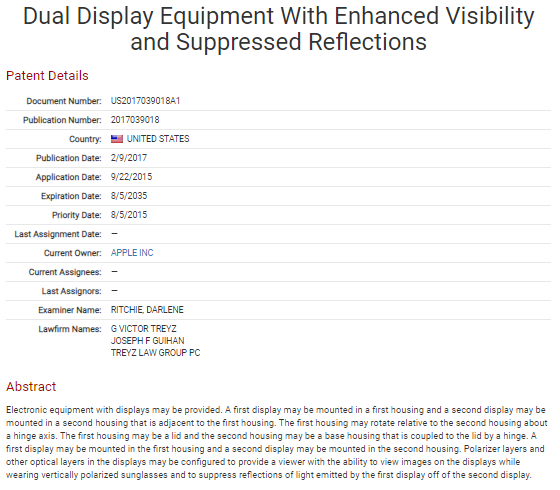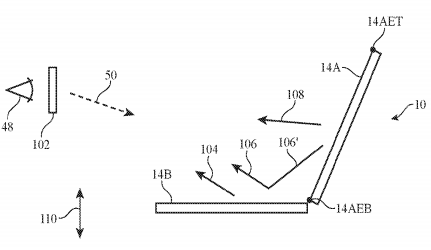Whether companies use patent portfolios to encourage innovation or to stifle competition, protecting intellectual property (IP) is an important part of corporate strategy. As ktMINE has previously noted, companies rely on patent and trademark infringement litigation to prevent competitors from copying valuable designs and inventions. Apple, in one notable example, has been arguing in court since 2011 that Samsung committed patent infringement by copying features of its smartphones and tablets. In the latest verdict in late May of this year, the U.S. District Court in San Jose ordered Samsung to pay Apple $539 million in damages for infringing upon three design patents and two utility patents.
Apple has fully embraced using the technology patent system to its advantage, dating back to Steve Jobs’ determination in 2006 to protect the iPhone before its first release. According to the company’s former general counsel, Nancy Heinen, “[Steve Jobs’] attitude was that if someone at Apple can dream it up, then we should apply for a patent because even if we never build it, it’s a defensive tool.” Apple’s extensive patent portfolio reveals certain trends in research and development but also indicates the company’s intent to use its intellectual property as a tool to prevent competitors from either copying existing technologies or bringing Apple’s “original” ideas to fruition first.
Insights Gained Through Apple Trademarks and Patents
The patent and trademark filings made by Apple through the years provide insight into past and present product development and demonstrate the company’s prioritization of intellectual property protection. According to a search in ktMINE’s intellectual property software, Apple has nearly 1,000 trademarks registered in the U.S. and over 350 unregistered but filed. A trademark list published by Apple, while noted as non-exhaustive, represents only a small fraction of this.
The number of patents Apple has applied for and been granted worldwide has been steadily increasing over the last 20 years, as seen in the chart below.
Worldwide Apple Inc. Patents for the Past 20 Years

Note that an up to 18-month period can exist between the date a patent application is filed and the date this information becomes publicly available. The leveling-off and drop in patent count from 2016-2018 is not necessarily reflective of Apple’s current patent portfolio, and the general trend toward growth is likely to continue. Source: ktMINE Patent Analytics
Diving into Apple’s patents on the ktMINE IP Platform provides a snapshot of product development through the years, from an early-millenium laptop design to an iteration of the Apple Watch.
Computer Enclosure – US2002144032A1

Source: ktMINE Patent Search; full-text original patent documents on Espacenet
Intellectual Property as an Indicator for Future Innovations
Apple’s trademark and patent filings can also indicate potential directions for future product development. AirPods, for example, was released in September 2016. Apple had actually filed for a U.S. Trademark for AirPods a full year earlier:
Airpods Trademark

ktMINE IP Platform contains over 9.1 million trademark records
At their latest Worldwide Developers Conference (WWDC) in early June 2018, Apple unveiled the newest macOS, Mojave. California-themed trademarks for Mojave, Yosemite, and others had reportedly been filed as early as 2014 in Trinidad and Tobago (under shell company names). As seen among Apple’s most recent filings, they applied to register a U.S. Trademark for “macOS Mojave” on the same date as their WWDC announcement this year:
MacOS Mojave Trademark

Some of Apple’s more recent patent applications and grants — from the over 70,000 listed in a patents search on the ktMINE IP Platform — include multiple patents concerning the physical design of phones, tablets, and computers, from folding displays to wrap-around screens, as well as the actual engineering methods and technology behind such designs. Included below are several examples of these designs.
Patent Application for Dual Display Equipment

Source: ktMINE Patent Search; Espacenet full-text document

Images depicting a laptop or tablet design with dual screens and optical layers to enhance display visibility. Source: ktMINE Patent Search; Espacenet full-text document
Patent Application for Electronic Device with Sidewall Displays

Source: ktMINE Patent Search; Espacenet full-text document

Images depicting the design of a screen that wraps around the sides of such a device (in this case, a phone). Source: ktMINE Patent Search; Espacenet full-text document
With Samsung heavily rumored to be working on a foldable phone for release within the next year, it will be interesting to see if and how Apple and Samsung compete in the foldable-screen phone market, and whether patent litigation between the two companies comes into play once again.
Taking a noteworthy step in a new direction, Apple has also recently filed numerous patents related to augmented and virtual reality. At WWDC 2017 Apple introduced ARKit, a platform for developing AR applications for the iPhone and iPad. This software is Apple’s only public foray into the AR/VR field (read: no headsets — yet), while Facebook’s Oculus, Google, HTC, and others have been releasing prototype and commercial versions of VR hardware and software for years. Apple’s patent applications suggest that the company is planning to enter the augmented reality space with dedicated hardware of its own, potentially to be used in conjunction with the iPhone, as seen in the following filings.
Patent Details – US9749451B2

Source: ktMINE Patent Search; Espacenet full-text document

Source: ktMINE Patent Search; Espacenet full-text document
Apple’s Approach to IP: Smart Strategy or Creativity Killer?
The above patent search results indicate Apple could potentially be seeking to advance its AR/VR technology offerings and eventually release a headset, and that the company plans to continue adapting and innovating upon the standard physical form of its products. While not insignificant, these predictions likely only represent a very small subset of what the company may be developing. Apple is known for hiding its patent and trademark filings in various ways; this was done to keep the name of the iPhone X a secret up until its release, for example, and to disguise potential macOS names as previously mentioned.
To work around Apple’s attempts at obfuscation, it helps to have an understanding of known related entities. Corporate Tree Mapping is ktMINE’s answer to aggregating such a list. There are 92 companies in ktMINE’s corporate tree for Apple, allowing for a thorough look at the company’s intellectual property profile. But this doesn’t necessarily include all unverified dummy corporations named in internet rumors as attached to Apple.
Apple Inc. Corporate Tree

Source: ktMINE Profiles Corporate Tree Mapping
Apple has dominated the industry with popular and sometimes revolutionary product designs and utilities, and the above exploration of its intellectual property activity suggests that more surprises are on the horizon. But will the company’s ultimate legacy be that of a transformative trailblazer, or of a patent strategist that leans on suing for success? From hiding trademark and patent filings to initiating lawsuits against other tech firms, Apple goes to great lengths to protect and exploit its intellectual property for a competitive advantage. The company claims to stand for innovation, but this approach may actually stifle creativity and inventiveness in the technology space.
The future of Apple — and of Silicon Valley at large — depends on the future of patent law (particularly in relation to software), and on corporations’ evaluation of the relative worth of actual R&D efforts versus intellectual property litigation.
Be sure to check out our most recent blog highlighting Apple’s intellectual property here.




